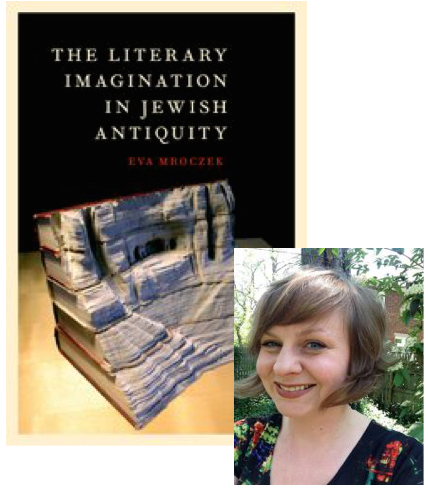 One of the books I am currently reading is The Literary Imagination in Jewish Antiquity by Eva Mroczek and I was intrigued by her discussion of how the scholarly community have debated the historicity of the “Teacher” who speaks powerfully of his experiences in the Thanksgiving Hymns of the Dead Sea Scrolls. Many scholars have identified the Teacher of Righteousness (otherwise known from the Damascus Document) as the author of these hymns. Notice, for instance, the introduction to the Thanksgiving Hymns by Wise, Abegg and Cook:
One of the books I am currently reading is The Literary Imagination in Jewish Antiquity by Eva Mroczek and I was intrigued by her discussion of how the scholarly community have debated the historicity of the “Teacher” who speaks powerfully of his experiences in the Thanksgiving Hymns of the Dead Sea Scrolls. Many scholars have identified the Teacher of Righteousness (otherwise known from the Damascus Document) as the author of these hymns. Notice, for instance, the introduction to the Thanksgiving Hymns by Wise, Abegg and Cook:
The intensely personal tone of the songs known commonly as Thanksgiving Hymns stands in sharp contrast with the rest of the scrolls. The author speaks of himself in the first person and recounts an agonizing history of persecution at the hands of those opposed to his ministry. In addition, the writer describes having received an empowering spirit granting him special insight into God’s will (1QH3 4:38), opening his ears to wonderful divine mysteries (9:23), using him as a channel of God’s works (12:9), and fashioning him as a mouthpiece for God’s words (16:17). Indeed, in col. 26, he claims that no one compares with him, because his office is among the heavenly beings. These are bold affirmations for any leader, reminiscent of various messianic claimants of both ancient and more recent history.
The unique personal presentation of the work and the self-conscious divine mission of the author have led many researchers to conclude that the psalms were written by the Teacher of Righteousness himself. Some students have attempted a more refined analysis in order to isolate “true” Teacher psalms at the center of the collection (cols. 10—16 according to one, 13—16 in the eyes of another; see Hymns 10—13,15—20,23), noting that the themes of personal distress and affliction as well as the claim of being the recipient or mediator of revelation are especially strong here. Only one thing is sure: the debate will continue.
Michael Wise, Martin Abegg Jr, and Edward Cook, The Dead Sea Scrolls: A New Translation, 2005. pp. 170-71.
Eva Mroczek is writing about literary/philosophical character of Ben Sirach and finds a parallel with the Teacher of Righteousness who is sometimes said to be the author of the Thanksgiving Hymns among the Dead Sea Scrolls. From pages 98 and 99:
Another example of such a rhetorical strategy is the so-called Teacher Hymns in cols. 10-17 of the Hodayot or Thanksgiving Hymns from Qumran. These first-person compositions have been read by some Qumran scholars32 as the ipsissima verba of the Teacher of Righteousness, an enigmatic figure who appears as a founder and leader of the sectarian community in some Qumran texts. The hymns, then, were imagined to be the creative autobiographical work of this putative individual, and were mined for information about this mysterious figure’s life. For example, Michael Wise has extracted from these hymns not only data about the Teacher’s life, persecution, and exile but also insights into his spiritual life—and even his name.33
But over time, as Max Grossman has shown, scholars began to question the idea that the Teacher of Righteousness is the “author” of these texts—that this figure is a historically locatable individual who can be imagined as an individual creator of the textual products of the Qumran community.34 With regard to the poetic Thanksgiving Hymns, it is doubtful that they can be used to reconstruct the historical and interior life of a specific individual. An excellent critique of the tendency to read the Hodayot as autobiography comes from Angela Harkins,35 who argues that such a reading is rooted in Romantic ideas of individual authorship that are foreign to Jewish antiquity. . . .
But no specific historical figure can be reconstructed from poetic hymns: they use familiar images and literary tropes, including first-person references to suffering and persecution that are not to be understood as biographical accounts of specific historical experiences. The “I” of the hymns can, instead, be understood in other ways . . . . The first-person voice is perhaps representative of the “office” of an inspired community leader and the ideal, exemplary teacher, rather than reflective of a specific historical personality.37 Or, as Harkins suggests, it is a “rhetorical persona” to be actualized by the reader in ritual performance: the reader embodies the “I,” and the text becomes an “affective script for the reader to reenact.”38
Okay, time to check out some of those end-notes.
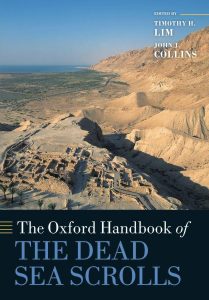 #34, Maxine Grossman takes a postmodernist perspective in which (as I interpret it) the historicity of the Teacher of Righteousness is irrelevant to the message(s) and meaning(s) of the text itself. Nonetheless there is a pertinent point made in the following:
#34, Maxine Grossman takes a postmodernist perspective in which (as I interpret it) the historicity of the Teacher of Righteousness is irrelevant to the message(s) and meaning(s) of the text itself. Nonetheless there is a pertinent point made in the following:
The authorial voice in the so‐called Teacher Hymns of the Hodayot . . . . In one representative hymn, the leader tells of teachers of lies who have seduced his followers away (1Q H 12: 5–13: 4; García Martínez and Tigchelaar 1997, vol. 1: 166–171; Newsom 2004: 197 n. 12). He speaks of being despised and banished and of losing his followers to preachers who offer an easier, but illegitimate, message. His tone then turns to one of relative confidence: he knows that God will judge the wicked in due time, while those who keep to God’s path will be rewarded. The speaker acknowledges that he is a vessel of God, asserting at great length the understanding that although his role is to enlighten his followers, this role is only possible because he is a conduit for God’s power and God’s knowledge.
Here, again, we can imagine a variety of audiences implicit in—or as part of the historical reception of—the text. In the author’s own day, audience members might recognize the situation he describes and recall their own experience of it. Sectarians reading in a later day might similarly imagine how they would have responded to these earlier events, while later group leaders might take this role model as one to emulate in both their doubtful times and their times of more confident faith in God. . . .
The Teacher as historical author of some of these texts may remain a valid possibility, but we must at the same time be willing to negotiate other distinct alternatives: that a given text was written as a retrospective treatment of the Teacher’s message, or as an idealized version of what the Teacher might have said in novel circumstances, or even what a later group member or leader might wish to say, irrespective of the Teacher and his message. . . .
Maxine Grossman, “Roland Barthes and the Teacher of Righteousness:: The Death of the Author of the Dead Sea Scrolls” in The Oxford Handbook of the Dead Sea Scrolls, edited by John J. Collins and Timothy H. Lim. DOI: 10.1093/oxfordhb/9780199207237.003.0030
.
That doesn’t seem very decisive, but that’s postmodernist literary criticism. It doesn’t really tell us if the Teacher of Righteousness was the historical author or leader of the community but we do have to concede that there is nothing in the text that requires the figure to have been “real”. The Teacher does well serve as a “righteous figure for all seasons”, one with whom any devout facing the “real world” with firm convictions in his or her own superior righteousness can find vicarious dramatic identification.
.
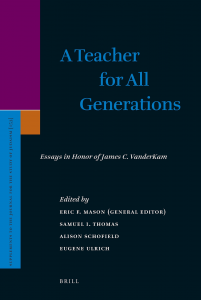 #35, Angela Harkins, by contrast, is no-nonsense bluntness:
#35, Angela Harkins, by contrast, is no-nonsense bluntness:
This essay has asked whether the Teacher of the Teacher Hymns is a historical Teacher-figure. My conclusion to this question, first asked more than fifty years ago by Sukenik, is that this is not a historical person. The vivid and dramatic references to the speaker’s experiences in the Teacher Hymns do not point to a historical flesh and blood Teacher but rather construct [fictional/rhetorical*] body that assists the reader in entering into the world of the Hodayot [=Thanksgiving Psalms]. Yet the Teacher whom this essay seeks to honor is very real. He is a teacher of great patience, abundant generosity, and infinite knowledge. I am grateful to have learned from him about the world of the Second Temple period. [* “fictional/rhetorical” are terms that Harkins replaces with more nuanced scholarly coinage.]
But she does lead up to the above conclusion with criticisms of arguments that have been used to argue the contrary. One argument for the historical reality of the Teacher of Righteousness that Harkins addresses is the “vivid and dramatic language” that was presumed to point to a real-life figure and experiences.
The vivid and dramatic language in the Teacher Hymns was presumed to be unique to this collection and a sign of a “strong I.” However, the assumption that unique literary style and a “strong I” are markers of an authorial voice reflects an expectation about texts that may mischaracterize writings from the Second Temple period. Such a view wrongly assumes that more vivid and dramatic texts possess an authenticity that is not found in writings that use more stereotypical language.
Another argument for the “historical genuineness” of the Teacher of Righteousness texts was that some scholars believed they had been able to identify a distinctive literary style in the relevant parts of the scrolls. Such arguments, Harkins objects,
Douglas’s arguments in favor of the Teacher Hymns Hypothesis [that their author was the historical Teacher of Righteousness] rely on historical Jesus methodology, and this is problematic in the case of the Hodayot. He reasons from the criterion of dissimilarity that distinctive speech can authenticate texts.25 Yet, unlike the Jesus sayings, which have the benefit of ancient attributions of a phrase to Jesus, no such attributions connect the Teacher Hymns or any of the other Hodayot hymns with a historical figure, and no ancient texts associate the Hodayot with the Teacher of Righteousness. The earliest attribution of these writings to the Teacher of Righteousness comes from Eleazar Sukenik in the modern period. The literary exercise of isolating a distinctive phrase does not demonstrably identify the author as a historical figure.
And further,
Both Jeremias and Becker presume that an author can be identified by a distinctive literary style, and they both presume that the strong, authoritative “I” of the Teacher Hymns is a marker of a uniquely extraordinary author. The Heidelberg school, and scholars who situate themselves in that tradition, assumes an understanding of authorship that privileges the work of the writer as an individual who creates by means of a unique literary style. Such a view of authorship runs counter to how scribes of the Second Temple period actually engaged in the production of sacred writing—namely, they sought to erase signs of individuality for the sake of attaching their new compositions to the true authority of revealed literature. The authorship of the Hodayot should not be understood according to anachronistic models of authorship which search for signs of a single historical author by isolating a distinct literary compositional style.
Angela Harkins goes further and identifies the historicising arguments of Jeremias, Becker, Douglas and others as expressions of “a model of authorship that befits a Romantic poet”. That’s a real “ouch” because the model of the Romantic poet she has in mind is that Lord Byron/Percy Bysshe Shelley/John Keats type who: is “moody and wildly temperamental”, just as they express in their poetry. The Romantic hero figure behind such a model of authorship explains scholars’ willingness to find a historical Teacher of Righteousness in the hymns: 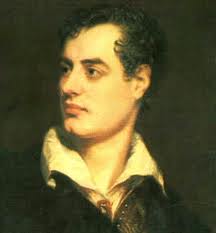
Walter L. Reed describes the unique characteristics of the Romantic hero as being threefold:
(1) the hero has a privileged status with respect to the divine;
(2) the hero is both beleaguered by and also a potential redeemer of his society;
and (3) the hero himself experiences transformation in a significant way.31
That is, the exact mold of the Teacher of Righteousness figure as found in those Thanksgiving Hymns?
Another characteristic of the hymns used to bolster their author’s historicity is their “powerful authoritative claims”:
Traditional arguments in favor of Teacher Hymns Hypothesis frequently appeal to the powerful authoritative claims that the speaker makes of having a privileged relationship with the supernatural. This aspect of the Teacher Hymns Hypothesis capitalizes on the uniqueness of the strong literary style of the Teacher Hymns and the extraordinary events that they describe. Oftentimes the events include the granting of special revelation by God or a testimony of some other transformative experience.34 Jeremias’s argument in favor of a historical author emphasizes the unique and revolutionary aspects of the speaker’s authority and role. He reasons that it could not have been the case that more than one individual enjoyed the same authority as the speaker of these writings.
To which Harkins replies:
Jeremias reasoned that there could have been only one unique figure who could have experienced what was described in the compositions known as the Teacher Hymns. This reasoning reflects a common early assumption in Qumran studies that the collection known as the Dead Sea Scrolls was preserved by a single community. Such an assumption has been rightly disproven in recent studies such as that by Alison Schofield whose important examination of the textual development of the Qumran Community Rule demonstrates that, in fact, the Dead Sea Scrolls reflect multiple communities.36
But the Hymns express the first person “I”, and that with emphasis. How could that manner of writing not be a clear expression of a genuine historical person’s life and role?
The “strong I” in the Teacher Hymns was taken to be a sign of a strong authorial voice that was assumed to be speaking autobiographically, with the assumption that autobiographical writings contain historical data. Sukenik was the first to introduce the idea that these writings were autobiographical meditations by the Teacher of Righteousness, but ironically, around the same time, literary critics were challenging the operative assumptions surrounding autobiography as a vehicle of truth-telling.37
Harkin reminds readers of studies dating back to the 1950s that were pointing out that the motivations for writing autobiography was “identical to the ones that drive one to write fiction”, yet decades later that message had made very small inroads in the broader world of literary criticism. Scholars are loathe to accept this fact and the very idea of associating autobiography with fiction in actual writing practice “is still apt to be felt as something of a scandal.”
The prevailing approach toward autobiography by literary critics today takes the autobiographical “I” as a fictive persona, not as a historical reality.41 This can also be a helpful way of considering the “I” in the Qumran Teacher Hymns as well.42
So Harkins comes to her conclusion:
In closing, I wish to propose that the vivid and dramatic language in the Teacher Hymns should not be understood as evidence of a real person’s experience but rather as a marker of a textualized self, a rhetorical persona that seeks to describe phenomenal, extraordinary experiences . . . . This view goes against a long-held scholarly view that has hypothesized that these compositions can be traced back to the experiences of the founder of the community, the Teacher of Righteousness. The Teacher Hymns Hypothesis has never been the consensus view among Scrolls scholars,45 yet it has unduly influenced the popular understanding of these texts.
And once more:
This essay has asked whether the Teacher of the Teacher Hymns is a historical Teacher-figure. My conclusion to this question, first asked more than fifty years ago by Sukenik, is that this is not a historical person. The vivid and dramatic references to the speaker’s experiences in the Teacher Hymns do not point to a historical flesh and blood Teacher but rather construct [fictional/rhetorical*] body that assists the reader in entering into the world of the Hodayot[=Thanksgiving Psalms]. .
Angela Kim Harkins, “Who is the Teacher of the Teacher Hymns? Re-Examining the Teacher Hymns Hypothesis Fifty Years Later” in A Teacher for All Generations: Essays in Honor of James C. VanderKam, edited by Eric Mason et al.
Harkin also points to a reason so many scholars have been, presumably, misled about the historical character of the author of the Thanksgiving Hymns. The reason was a combination of outdated and quite naive perceptions of “how literature works” (both today and in the Second Temple era) on the one hand and a strong desire to identify a “flesh and blood historical person” in the scrolls on the other.
I could not avoid pausing when Harkin reminded us that Second Temple authors sought as a rule to hide their individuality. That’s probably a point worth keeping in mind when looking at other literature like the gospels that appeared not very long after the Second Temple period.
.
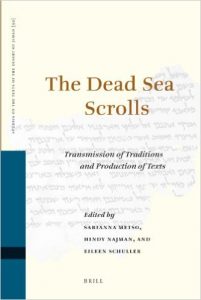 #37, F. Garcia Martinez, extends the discussion of the “Voice of the Teacher (of Righteousness)” to the Damascus Document and other scrolls/manuscripts from Qumran and makes a similar point. Details of her argument are too complex to set out briefly here so I limit myself to a few conclusions:
#37, F. Garcia Martinez, extends the discussion of the “Voice of the Teacher (of Righteousness)” to the Damascus Document and other scrolls/manuscripts from Qumran and makes a similar point. Details of her argument are too complex to set out briefly here so I limit myself to a few conclusions:
The strict parallel between the two shows us, it seems to me, that the “voice of the Teacher” is used as a strategy’ to give authority to the norms of the group, in a similar way as the “voice of Moses” is used in 4Q266 la-b 15-16 (“and do not listen] to the voice of Moses”)25 or in 4Q37 8 2 6 326 “they pa[y]ed attention to the voice of Mojses…]” to express the authority of the revealed Torah.
Quoting John Collins,
“This usage suggests that such titles as Interpreter of the Law and Teacher of Righteousness could be variously used to refer to figures past or future, and that they are interchangeable.”33
What was happening was that certain “proto-biblical” writings were being re-interpreted and even extended with new revelations. Authority was required to establish these new interpretations and revelations. And this brings me back to the primary theme of Eva Mroczek’s book The Literary Imagination in Jewish Antiquity: writings of these Second Temple scribes were conceptualised as extensions of ongoing revelation that began in antiquity and would continue through to the “end of time”. New revelations necessitated authoritative voice to validate them. Authors “sought to erase signs of individuality”.
This allows us to conclude that the “voice of the Teacher” as an authority-conferring strategy is not limited to the activity of the historical Teacher of Righteousness, the one who represented it eminently, but that it was “institutionalized” within the groups that took their inspiration from this figure and became the channel of a continuous revelation while expecting the final revelation at the end of times.
I think the next passage has some relevance for the way we understand the literary world from which the gospels emerged:
After analyzing the biblical precedents of the concept of “revelatory exegesis” in his book Mediating the Divine, Alex Jassen concludes that in Chronicles and in Ezra “revelation is reconfigured as a process of reading, interpreting, and rewriting ancient prophetic Scripture.”36 This process, clearly started within what we call Scripture, is amply developed in later periods. As Collins has indicated: “It is a commonplace that the interpretation of older Scriptures is a major factor in the composition of Jewish writings of the Hellenistic and Roman periods.”37 . . . .
I think we can conclude that “the voice of Teacher” is used within the collection of manuscripts as an authority-conferring strategy for compositions that expand and adapt the Torah to the needs of the group, and that “reveal” what in the Torah has remained “hidden” from all Israel.51 And as we are going to see, “the voice of the Teacher” is also used to confer authority to compositions that read the present and the history of the groups in the words of the classical Prophets. . . .
“The voice of the Teacher” not only explains the secret meaning of the words of the prophets, but extends the revelation contained in their words. What was not revealed to the Prophet has been made known to the Teacher, and it is the “Teacher’s voice” that guarantees its veracity . . . .
[T]he group that put together the collection of manuscripts saw itself within the continuous tradition of divine revelation where the writings that would end up as Scripture were growing and taking definite shape, and that therefore they understood themselves to have the right to prolong and develop this revelation. The authority of the Prophets, as the Serek says, came from the inspiration of the divine spirit, and this inspiration continues within the group in what I called many years ago “prophetic exegesis.”56 The Teacher of Righteousness, like the Interpreter, searches the Torah, the Prophets, and all other writings considered authoritative, and in this task he is assisted by the same divine inspiration which is the origin of those writings. It is this inspiration, this divine revelation, which allows him not only to understand the true meaning of those writings, but to invest new writings with the same authority.
Is there any potential relevance here for the community/ies responsible for the New Testament gospels and perhaps even some of the epistles?
I do not think that this authority-conferring strategy belongs exclusively to the Qumran group. . . .
Thus, although only attested in this period within the collection, I think we can also suggest that this authority-conferring strategy was more general and could have been used by other groups that composed their own writings and attributed to them the same authority of sacred writings. At least, this is certainly the strategy used later on by the writers of the New Testament to confer authority on their own writings.
.Florentino Garcia Martinez, “Beyond the Sectarian Divide: The “Voice of the Teacher” as an Authority-Conferring Strategy in Some Qumran Texts” in The Dead Sea Scrolls: Transmission of Traditions and Production of Texts edited by Sarianna Metso et al.
If you enjoyed this post, please consider donating to Vridar. Thanks!

.
“That doesn’t seem very decisive, but that’s postmodernist literary criticism. It doesn’t really tell us if the Teacher of Righteousness was the historical author or leader of the community but we do have to concede that there is nothing in the text that requires the figure to have been ‘real’. The Teacher does well serve as a ‘righteous figure for all seasons’, one with whom any devout facing the ‘real world’ with firm convictions in his or her own superior righteousness can find vicarious dramatic identification.”
So too isn’t this consideration analogous with decisive questions regarding the historicity of Jesus? To what evidentiary extent ought we “concede that there is nothing in the text that requires the figure to have been ‘real’.” For doesn’t the gospel Jesus, like “the Teacher does well serve as a ‘righteous figure for all seasons’, one with whom any devout facing the ‘real world’ with firm convictions in his or her own superior righteousness can find vicarious dramatic identification.”(?)
Your point is well taken about Jesus, however the one difference between Jesus and the “teacher of Righteous” – regardless if the (TR) is real or not is that the writers of the NT profess that their teacher rose form the dead and showed himself alive to many witnesses. If this is not a fact, then everything else becomes irrelevant in the NT.. I’m not wishing to debate the resurrection, just stating that without the resurrection of Jesus the NT can be place on the shelf with all the other interesting books that have no real other worldly value.
Your point is well taken about Jesus, however the one difference between Jesus and the “teacher of Righteous” – regardless if the (TR) is real or not is that the writers of the NT profess that their teacher rose form the dead and showed himself alive to many witnesses. If this is not a fact, then everything else becomes irrelevant in the NT.. I’m not wishing to debate the resurrection, just stating that without the resurrection of Jesus the NT can be place on the shelf with all the other interesting books that have no real other worldly value.
A Narrative Argument that the Teacher of Righteousness was Hyrcanus II
http://www.bibleinterp.com/articles/2015/03/dou398018.shtml